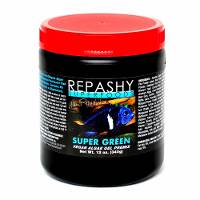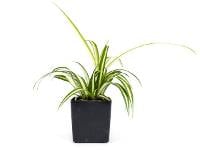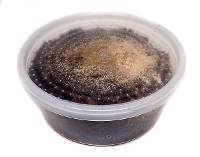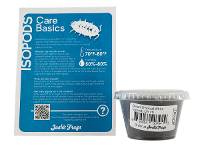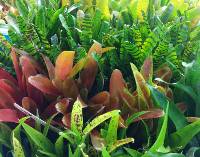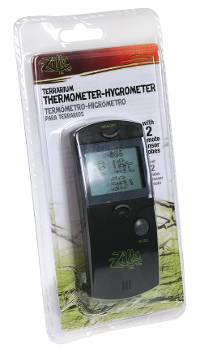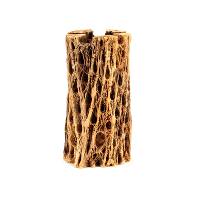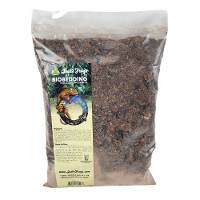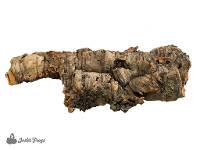Josh's Frogs
Peacock Day Gecko - Phelsuma quadriocellata (Captive Bred)
Peacock Day Gecko - Phelsuma quadriocellata (Captive Bred)
$79.99 0.0 out of 5 stars
(0)
0.0 out of 5 stars
(0)About This Product
Defining Characteristics:
- Beautiful colors
- Diurnal
- Active, quick day gecko
- Excellent display animal
Name: Phelsuma quadriocellata. Known as the peacock day gecko for the conspicuous black spots, often outlined in blue, behind their limbs.
Recommended Enclosure Size: A single animal can be kept in a12x12x18. Pairs have been successfully kept and bred in this size enclosure, although a pair of these very quick and active day geckos will appreciate an 12x12x24 glass enclosure. A bioactive setup with live plants is strongly recommended for this species; BioBedding is recommended to maintain live plants, springtails, and isopods.
Temperature: Keep peacock day geckos between 75-80 F. A basking spot of around 90 F is also recommended. Temperature should be monitored with a digital thermometer. Night temperatures should not fall below 65 F. Peacock day geckos should also be provided with a 5.0 or similar strength UVB light.
Humidity: Peacock day geckos should be provided a humid but well-ventilated setup between 60-70%. Plants can be added to help stabilize higher humidity as well as provide humid microclimates. Ambient humidity should be monitored with a digital hygrometer. Peacock day geckos should be misted daily to provide dew on enclosure walls and cage items from which they can drink. A water dish can be provided but is not necessary with regular misting; a water dish will not replace the need to regularly mist the enclosure.
Size: These day geckos reach around 5 inches as adults.
Age: Peacock geckos are at least 4 weeks old when sold by Josh’s Frogs, at which time they are well established. It is estimated that these geckos live for 10-15 years in captivity.
Feeding: Peacock day geckos are omnivores, eating both insects and fruit in the wild. In captivity, they will thrive on a diet of gecko diet mix and feeder insects. Hatchlings and juveniles should be offered ⅛-inch crickets or fruit flies until they are large enough to eat ¼-inch crickets. Providing mounted feeding cups for this arboreal species is recommended. Other appropriately sized feeder insects, like dubia roaches and black soldier fly larvae, can also be occasionally offered but need to be provided in a food dish to be accessible. Feeder insects should be dusted with a calcium and multivitamin supplement.
Sexing: Male peacock day geckos can be identified by their femoral pores, which will be located between their hind legs. Females tend to have prominent calcium sacs flanking their head.
Color/Pattern: Peacock day geckos have a green base color. Individuals often have red markings down their back. Their defining feature is four conspicuous black spots behind their limbs, which are often outlined in blue in the forelimbs.
Social Behavior: This day gecko species is best housed as a pair or solo. Provided ample space as well as multiple basking and feeding locations, multiple females may be housed together with a single male.
Breeding: Peacock day gecko females will lay a pair of eggs in a secure location once every 30-40 days. Eggs are commonly laid nestled in between the leaves of live plants.
Natural Range: Peacock day geckos live throughout Madagascar.
History in the Hobby: These day geckos’ presence throughout Madagascar as well as their general hardiness have made them popular candidates for regular imports, but we’re dedicated to providing captive bred juveniles in the hobby!
Links of Interest:
- Supreme Gecko care sheet - Care sheet on peacock day geckos by Supreme Gecko
Still not sure if the peacock day gecko from Josh's Frogs is the right pet for you? Read the reviews below and see what other customers are saying!
Shipping
After placing an order containing a live animal, you will receive a scheduling email containing our JotForm scheduling link to schedule your new pet's delivery date.
With this scheduling link, you will be able to schedule your order's delivery up to 30 days in advance. You will be able to choose a date of delivery for Tuesday-Saturday (Saturday arrival depends on the carrier's service availability) with the estimated time of arrival generally being 12pm, or 4:30pm for more rural areas. Overnight lows must be above 40°F to ship directly to you (or above 30°F for FedEx Ship Center pickups) as well as below 90°F by estimated time of arrival.
If you require further assistance, or prefer to talk to one of our Customer Service agents, please feel free to reach out to our [email protected] email or our phone line 1-800-691-8178.
Other Customers Also Bought
Customer Reviews
0.0 out of 5 stars
Review data
5 star reviews
- 0%
4 star reviews
- 0%
3 star reviews
- 0%
2 star reviews
- 0%
1 star reviews
- 0%

